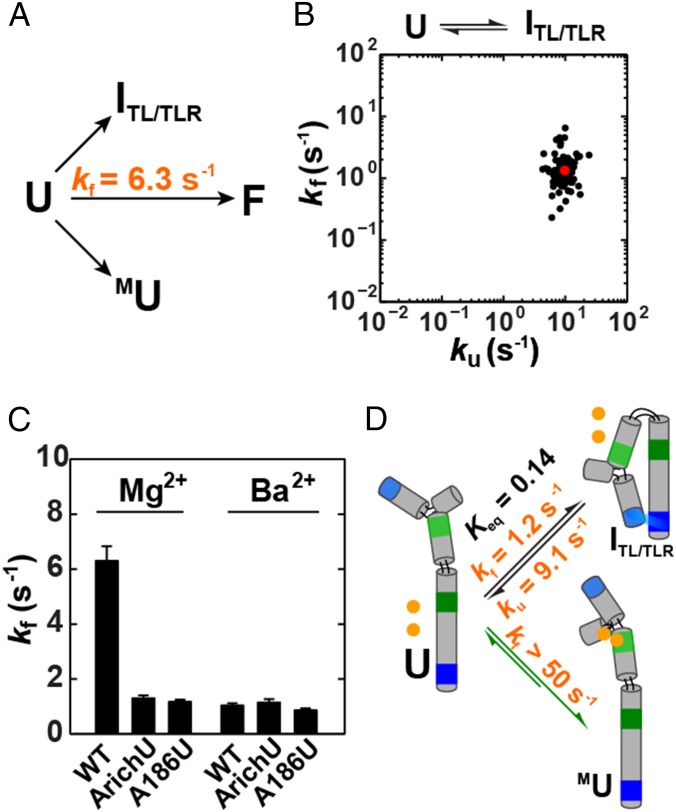Fig. 3.
Does the folding pathway proceed via formation of the tetraloop/tetraloop receptor (TL/TLR) or the metal core (MC)? (A) Folding from U could occur either through ITL/TLR or MU. (B) Scatter plot of the folding versus unfolding rate constants of the ArichU mutant (Fig. 1C) that isolates the U-to-ITL/TLR transition. (C) Comparison of the folding rate constants of WT, ArichU, and A186U P4-P6 in Mg2+ and Ba2+. Prior work has shown that Ba2+ does not bind to the metal core so the same folding behavior is predicted for WT P4-P6 and the ArichU and A186U mutants in Ba2+ (81). This expectation was met, suggesting that there are no unintended effects from the above mutations. Errors as in Fig. 2. Conditions were as follows: 50 mM MOPS, pH 8.0, 5 mM MgCl2 or BaCl2, and 100 mM KCl at 23 °C. (D) P4-P6 folds predominantly via formation of the MU intermediate (green arrows). The equilibrium and kinetic values shown for the U-to-ITL/TLR pathway are average values from A186U and ArichU variants (SI Appendix, Table S1). Estimation of the limit for the U-to-MU transition of >50 s−1 was determined from previous literature data (SI Appendix, SI Text).

